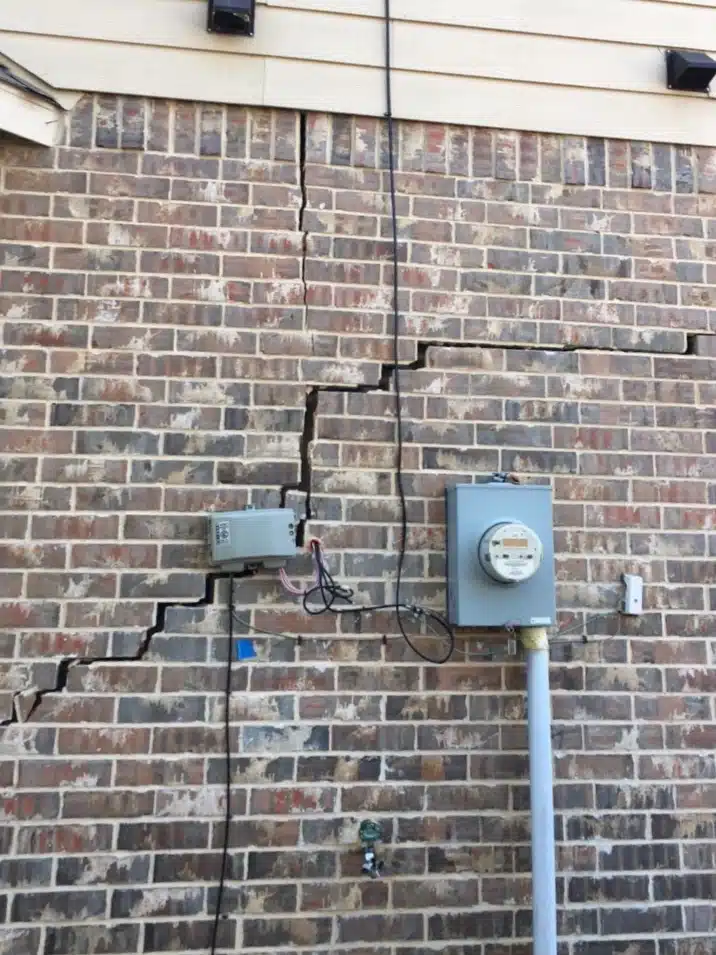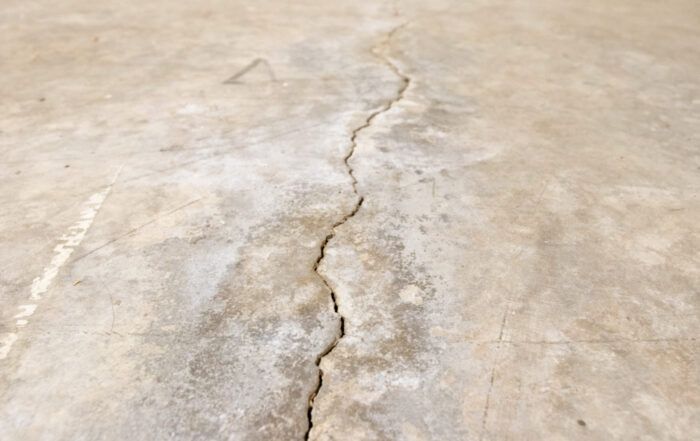5 Tips for Repairing a Cracked Foundation (Step By Step)

When you find a crack in your foundation, your first reaction might be to worry. However, not all foundation cracks are bad! In fact, cracked foundations are very, very common. And most of them occur within the first year of a home being built due to natural soil settlement and shifting into place.
However, knowing the difference between a crack that’s worrisome and one that can be left alone is vital to know when you need foundation crack repair.
Here are some helpful tips and steps to take when you find a crack in your foundation.
Is a Crack in Your Foundation Normal?
To the average homeowner, it can be hard to know if your foundation crack is typical or not. In general, small hairline cracks in your foundation are entirely normal and harmless. While all foundations move and settle over time and will eventually produce cracks of some kind, excessive cracking may be a sign of a more significant issue that needs attention.
How to Spot a Crack in Your Foundation
If you’re concerned about your foundation, there are a few things you can do to check for cracks.
- Do your own inspection in your home’s basement or crawl space with a flashlight and camera.
- Bring a measuring tape with you to measure the size of any cracks— document appropriately.
- Know the difference between a hairline crack and one that might be an issue.
- Look for water spots coming up from the floor or edges of your basement floor.
- Hire a professional foundation contractor to inspect your foundation for you.
Diagnosing Types of Foundation Cracks
Not all foundation cracks are considered harmful. But deciphering between them can help you save a ton of time (and money), ensure you get emergent ones repaired ASAP, and allow you to keep an eye on the others. Here are a few different types of foundation cracks and how critical they are.
Hairline Cracks
Hairline foundation cracks, commonly called shrinkage cracks, are literally the size of a hair or small thread. More often than not, they are completely harmless and are simply caused by your foundation settling after it’s built. It’s normal to show up in the first year or two of your home or foundation being built. However, keep an eye on them to ensure they don’t grow.
These can be filled or painted over if you don’t find them aesthetically pleasing. But if left alone, they’ll do just fine.
Vertical Cracks
Vertical foundation cracks are prevalent in poured concrete foundation walls and are not of significant concern. They’re one of the most common cracks and are also caused by standard settling and concrete drying. They can be filled using an epoxy injection and painted over if necessary. It’s essential to ensure they don’t grow in size, though; if so, you should have a professional fill and repair the crack.
Horizontal Cracks
A horizontal crack, on the other hand, could indicate a problem with the structural integrity of your foundation wall. This depends on whether they’re on the ground where the floor meets the wall vs. in the middle of your basement wall.
- Horizontal cracks along the bottom of your basement wall where it meets the floor can be caused by the concrete being poured and cured at different times. This is because they can’t form a proper bond as if they were to be poured and cured together. This is relatively harmless, but if you start to see leaks coming from them, get an inspection right away.
- Horizontal cracks in the center or other parts of the basement walls are a cause for concern, especially if they’re bigger than a quarter of an inch. These could be caused by unstable soil or too much soil pressure on the outside of your foundation. If these are left untreated, it could lead to the bulging or bowing of your foundation walls and even complete failure.
Stair-Step Cracks
Stair-step foundation cracks are a combination of vertical and horizontal cracks and can be caused by the soil settling and are only a cause of concern if they’re showing up in solid concrete walls.
If you notice them between rows of cinder blocks in a black-laid foundation, 99% of the time, they just need to be refilled or mortared. But if you’re noticing stair steps cracks in other areas, it could mean your foundation is shifting in multiple directions, indicating a soil issue and the potential for costly repairs down the road.
Diagonal Cracks
Diagonal foundation cracks, for the most part, are not a cause for alarm, especially if they’re hairline. However, they can cause concern if they indicate soil heaving or shifting. It’s important to note that these can be minor or major depending on the size, so you’ll want to have them inspected by a professional immediately if they’re larger than 1/8 inch.
Do All Foundation Cracks Need to be Repaired?
No, not all foundation cracks need to be repaired. If the cracks are very small or caused by settling, they can usually just be filled and painted over. However, if you’re seeing larger diagonal or horizontal cracks, these must be inspected immediately so any potential issues can be identified and addressed as soon as possible.
In some more extreme cases, you may need to have your foundation reinforced or replaced altogether. But this is usually only the case in older homes or homes with serious structural issues. Taking care of minor cracks early on can save you time and money, so check them frequently and get a professional inspection if necessary.
Foundation Crack Repair: DIY vs. Hiring a Professional
If your foundation cracks are small and aren’t caused by any structural issues, then you may be able to repair the crack yourself. You can fill a small crack with a concrete foundation repair kit and paint over it if necessary. But it’s best to call in a professional for larger cracks, especially ones that appear in multiple places.
Professional foundation repair technicians can thoroughly assess your home and recommend the most effective methods to fix any issue. Depending on the severity of your issue, they can also use specialized equipment, such as carbon fiber straps or wall anchors. This will ensure that your foundation is returned to its original strength and condition.
Tips for Repairing a Cracked Foundation (Step by Step)
Whether you’re a homeowner looking to fill your own foundational cracks or a professional inspecting someone’s basement. There are a few vital steps to take to solve the issue at hand.
1. Identify the Cause: Before attempting to repair a cracked foundation, it’s essential to identify what caused it in the first place. This could be anything from soil settlement or heaving to poor drainage or structural defects.
2. Clean Out the Crack: Once you’ve identified the cause of the crack, use a putty knife, screwdriver, or wire brush to clean out any debris from the crack.
3. Apply a Repair Kit: If you’re repairing a small crack, apply a concrete foundation repair kit to fill it in and stop water from entering the walls.
4. Allow Time for Drying: Give the repaired area time to dry before adding additional layers.
5. Paint Over the Repair: Once the area is dry, you can paint over the repair with high-quality exterior paint to seal in the crack and help prevent future damage.
Work With a Professional Foundation Repair Contractor
The foundation pros and self-proclaimed #DirtNerds at Perma Pier in Texas have the training, knowledge, and passion for helping solve and prevent any of your foundation issues. We know how finicky Texas soil can be and know how to mitigate issues with proper installation, repair, and foundation maintenance.
When you need some foundation cracks inspected or repaired— contact the #DirtNerds right away!



